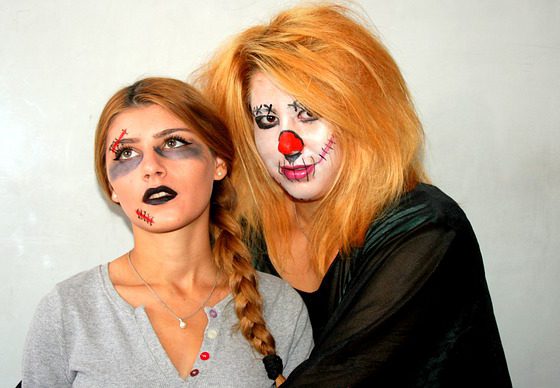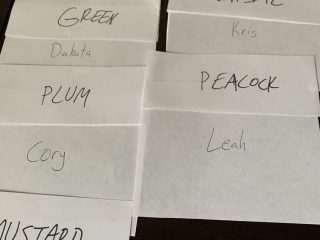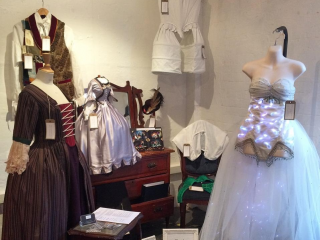Folks, puppetry is having a moment. No longer is the art form just for kids, or simply shorthand for campy, cheap entertainment. The art of puppetry is experiencing a kind of renaissance right now: both puppet theater as an art form and puppetry as a story-telling tool. Let’s explore!
Puppetry as a type of performance goes way back. And I mean way back. For thousands of years people have been using specifically crafted, carved, and constructed objects to tell stories. There is evidence that the ancient Egyptians used puppets as parts of religious ceremonies. Puppetry also had a home in Ancient Greece. Ritualized mask and object manipulation can be found throughout history in almost every society in the world, from the lifelike bunraku puppets of Japan to shadow puppetry in India. Throughout Italy in the Middle Ages, puppets were used to tell morality tales and religious parables, a teaching tool for holy stories. A more secular (and extremely popular) form of puppetry evolved in England with the antic slapstick of Punch and Judy shows.
Across the globe puppetry has been a vital form of expression, ritual, and celebration for centuries. Some historians even believe that puppets pre-date human actors on stage!�
There are many varieties and types of puppets, falling into a few basic forms: hand (or glove) puppets and rod puppets are operated from below, with the performer’s hand either inside the puppet or manipulating rods that are attached to parts of the puppet’s body. Marionettes are controlled from above via strings. Shadow puppets are illuminated from behind, their silhouettes projected onto some sort of screen. Found object puppetry uses everyday objects, as opposed to specifically constructed puppets, to tell stories. In all cases, an inanimate object is brought to life through the skill and precision of a performer (plus the good will and imagination of an audience).
In the modern age, puppetry has gotten something of a bad rep, often thought of as children’s birthday party entertainment or a trivial art form. But a lot of sophisticated, multi-dimensional puppetry work has been going on recently that employs puppets to make deeply human points. We are living through a puppet revival. Here are a few examples.
Puppetry festivals are popping up everywhere, not just celebrating the art form’s rich and multifaceted history, but also promoting new work and experimentation in the field St. Anne’s Warehouse in Brooklyn has a phenomenal Puppet Lab, culminating in the Labapalooza Festival, an awesome incubator and presentation of new puppet work. The Jim Henson Foundation honors and continues the spirit of the legendary Jim Henson (creator of the Muppets!) by providing grants to puppet artists.
Many new pieces of puppet theater being created are decidedly not for kids: puppetry is used as storytelling device enabling deep and unflinching dives into complicated and, sometimes, dark subject matter. The radically political Bread & Puppet Theatre troupe, now based in Vermont, is a prime example. Since the 1960’s they have been using mask and puppetry as performance modes to break through the noise of politics and social issues.
Then there is the present-day commercial, “legitimate” theater, in which puppets are finally having their moment in the sun. Julie Taymor’s innovative and hugely successful stage adaptation of Disney’s animated film, The Lion King, has been drawing massive crowds on Broadway since it opened in 1997. Her production draws on many different traditional puppet forms from around the world. Performers bring to life a whole host of African animals through elaborately constructed puppets; the performer is often still visible to the audience while they manipulate the device, presenting the audience with both the magic trick and the explanation of the trick at the same time. Far from destroying the wonder of these artificial creatures, the effect actually heightens it. The audience sees the performer and puppet at once, and is invited to not believe and to believe simultaneously.
Another long-running Broadway puppet play is the musical Avenue Q. A satirical riff on Sesame Street style of puppetry, these naughty puppets present a series of educational songs and lessons, but unequivocally NSFW. Avenue Q plays with our conceptions of puppets and gleefully explodes the idea that they are only for children. The result is both a traditional tribute to a relatively standard style of hand and rod puppetry (one character is even named “Rod”), and also an anarchic deconstruction of the form.
Robert Askins’ play Hand to God (which tells the rollicking tale of an adolescent’s bible- study hand puppet that gets possessed by the devil) similarly messes with our idea of what puppets can be and who they are for. Audiences went wild for both of these shows. Who knew sinful, truth-telling, foul-mouthed puppets could be so much fun?!
The Tony winning play War Horse used gorgeous large-scale puppets to bring an emotional and tender story to life. Since the narrative centers on the friendship between a young man, Albert, and his horse, Joey, it was vital that the horse puppet be able to emote and have a fully realized internal life. The geniuses at Handspring Puppet Company, based in Cape Town, South Africa, constructed Joey out of leather, steel, and even aircraft cables. As with The Lion King, the operators of the horse are fully visible to the audience. And yet, miraculously, one accepts that Joey is a horse, and that Albert’s relationship with him is tender and real. War Horse is a beautiful example of puppetry serving a story, allowing the richness and nuance of the characters to shine through their artificial forms. Handspring won a special Tony Award for their work.
Likewise, when it came time to adapt King Kong for the Broadway stage, the show’s creators manufactured a massive 20 foot tall, 1.2 ton(!) puppet gorilla that required 15 trained performers to move and operate. Lately with Broadway puppets, it seems bigger is better!
So why the renewed (and continued) interest in puppetry? Well, there is something beautifully universal about puppetry. It transcends nationality, specific cultures, and often language altogether. A well-made, well-articulated puppet triggers our sense of childlike wonder, fires our imagination, and reminds us of storytelling at its most primal and basic. The sheer act of taking an obviously inanimate, manmade object and breathing life into it is nothing short of a minor miracle. Audiences thrive on moments of transformation, of reanimation. Puppets give us that escape, that burst of awe. As our world gets more and more technological and as our lives become more and more digital, the physical, tactile simplicity of puppetry and handmade objects will take on an increasingly vital role. Rather than dying out, puppetry and object manipulation onstage will become more necessary and more powerful. The authenticity of wood, strings, felt, and fabric – magic you can touch – will only become more special and precious in performance. Whether it’s ancient, time-honored traditional puppet forms, passed down through countless generations, or whether its modern, boundary pushing creations, the art of puppetry has a unique place within the performing arts. The art form is as malleable and diverse as the theater-makers pulling the proverbial strings, from Punch and Judy to King Kong.














